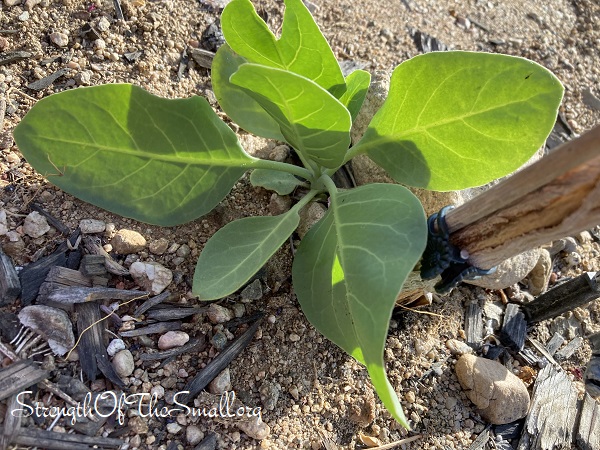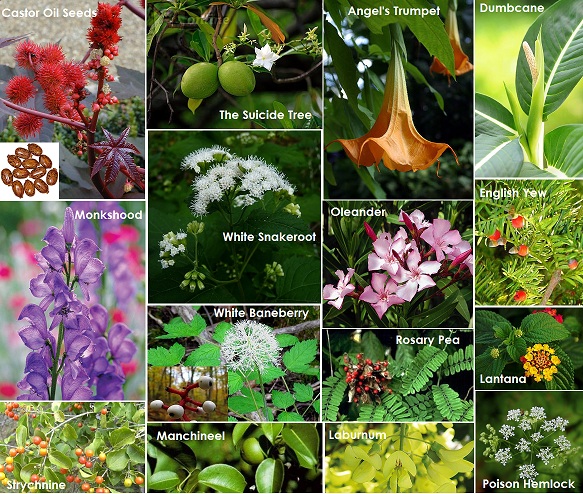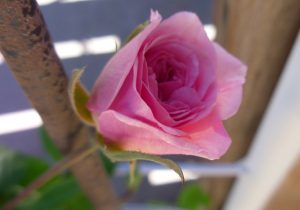A couple of months a ago, we purchased a few Lavender trees from Lowe’s. Every now and then I will find a freebie in the pot while transplanting the plant, and this time wasn’t different. I found a tiny seedling with large bluish-green leaves at the base of the Lavender plant and decided to let it be and see what it grows into (I am not fond of plants with large leaves, unless it’s a Magnolia plant). Today I found out that the plant is the seedling of Nicotiana Glauca. Though non-native to California, it is classified as invasive here.
Nicotiana Glauca, also known as Mustard tree, tobacco bush, tobacco plant, tobacco tree, tree tobacco, or wild tobacco is an evergreen shrub or small tree native to South America. The plant can grow up to twenty (20) feet and is short-lived. It is used as an insecticide and smoked as a stimulant by smoking the plant or chewing it. This plant contains the toxic alkaloid nicotine, and can cause blood pressure, cancer, peptic ulcers, tremors, joint pain, anxiety, depression, drowsiness, dizziness, vomiting, diarrhea, trouble sleeping, headaches, respiratory failure, etc … and death.
According to Tropical.theferns.info (Useful Tropical Plants Database), Nicotiana Glauca has a variety of medicinal uses such as:
– Applying a poultice of the leaves to cuts, bruises, swellings and other wounds.
– Applying a poultice of the leaves to remove the pus from scrofulous sores or boils.
– Using an infusion of the leaves as a steam bath in the treatment of rheumatism.
– Applying warmed leaves to the head relieves headaches, on the throat to relieve pain and put in shoes for painful feet.
Though ornamental, the plant is said to pose a threat to biodiversity by competing with native species for resources and displacing native plants. The plant is propagated by seeds and flowers emerge around one year after germination . It is said that in its native range, Nicotiana Glauca is pollinated exclusively by hummingbirds. All parts of the plant are poisonous.

Given the information I obtained about this plant, I know I should get rid of it. However, given the fact that I have never seen a Tobacco tree (and out of curiosity), I will keep it for a year, just until the first flowers emerge. I will relocate the seeding this weekend to the end of my property and watch it grow from a distance, until it’s time to bid it farewell.
Happy and safe gardening!














